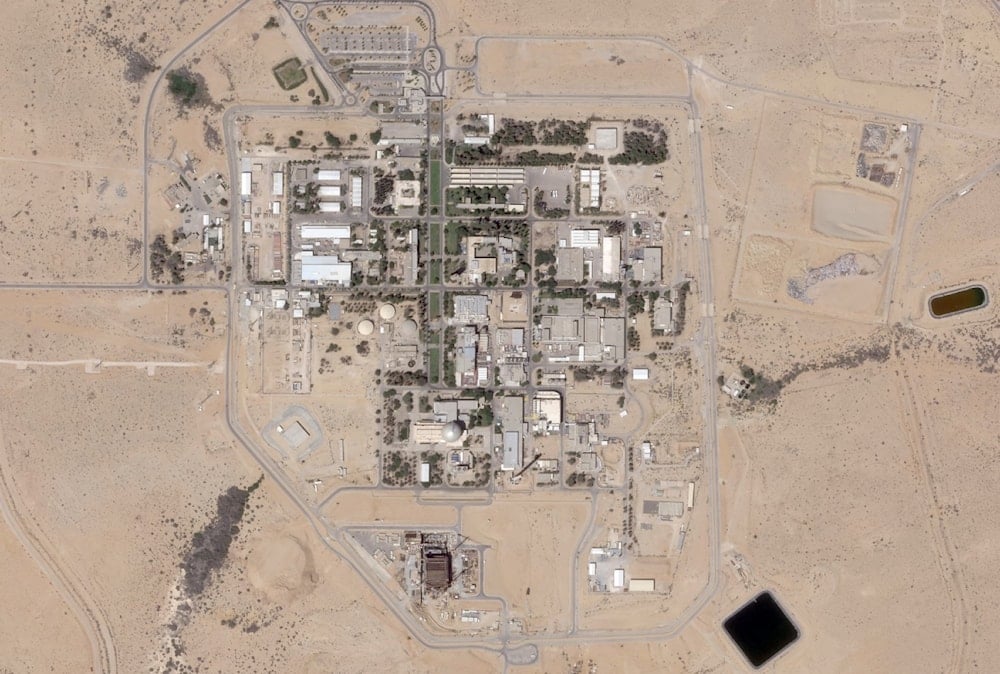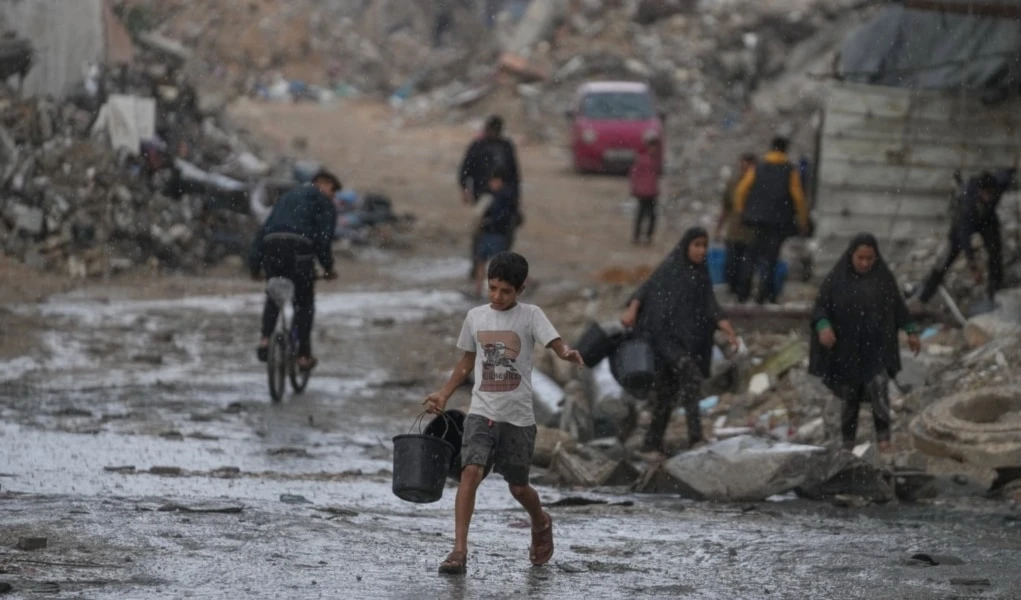Dimona facility gets upgrade: Is 'Israel' hiking its nuclear program?
Satellite imagery reveals intensified construction at the Dimona nuclear facility, home to "Israel's" suspected nuclear weapons program. Experts suggest it may be a new heavy water reactor or warhead assembly site.
-

This satellite photo provided by Planet Labs PBC shows the Shimon Peres Negev Nuclear Research Center near the city of Dimona, occupied Palestine, July 5, 2025. (Planet Labs PBC via AP)
Satellite imagery has revealed intensified construction work at the Shimon Peres Negev Nuclear Research Center, a site long believed to be central to "Israel's" clandestine nuclear weapons program. The facility, located near the city of Dimona in the Negev desert, is drawing renewed international attention amid signs that "Israel" may be advancing its nuclear capabilities, The Independent has speculated.
The latest images, captured on July 5 by Planet Labs PBC, show expanded activity at the site, including what appears to be a deep underground facility with multiple levels. Thick concrete retaining walls and large cranes are visible, indicating major development at a previously excavated area. Analysts suggest that this could signal the construction of a new heavy water reactor or possibly a facility for assembling nuclear warheads.
This comes after earlier satellite images in 2021 showed the initial stages of digging, a rectangular hole approximately 150 meters long and 60 meters wide, near the site’s original heavy water reactor.
-

This satellite photo provided by Planet Labs PBC shows the Shimon Peres Negev Nuclear Research Center near the city of Dimona, occupied Palestine, July 5, 2025. (Planet Labs PBC via AP)
According to the report, seven nuclear experts who reviewed the satellite imagery agreed that the construction is likely connected to "Israel's" long-suspected nuclear weapons program. Three of them suggested the size and structure of the construction area indicate it is most likely a new heavy water reactor. These reactors are capable of producing plutonium, a key ingredient in nuclear weapons.
The remaining four experts also acknowledged the possibility of a reactor but proposed that the construction could involve a nuclear warhead assembly facility, though they noted the project is still in its early stages and definitive conclusions are premature.
“It’s probably a reactor — that judgement is circumstantial but that’s the nature of these things,” said Jeffrey Lewis of the James Martin Center for Nonproliferation Studies. “It’s very hard to imagine it is anything else.”
New reactor or warhead assembly site
Experts note that Dimona’s current reactor has been operational since the 1960s, far longer than the typical lifespan of such facilities, indicating the need for either a retrofit or complete replacement. The lack of a containment dome does not rule out the possibility of a reactor, as it could be added later, or the design may not require one.
“If it’s a heavy water reactor, they’re seeking to maintain the capability to produce spent fuel that they then can process to separate plutonium for more nuclear weapons,” said Daryl G. Kimball, Executive Director of the Arms Control Association.
Others, such as Edwin Lyman from the Union of Concerned Scientists, emphasized that the secrecy surrounding "Israel's" nuclear activities complicates any definitive assessment. He also pointed out that tritium, another byproduct of heavy water reactors, decays by 5% annually and must be replenished, possibly motivating the new construction.
“If they’re building a new production reactor,” Lyman said, “it doesn’t necessarily mean they’re looking to expand the plutonium they have, but to manufacture tritium.”
Lack of international oversight fuels speculation
"Israel" maintains a policy of nuclear ambiguity, neither confirming nor denying the possession of nuclear weapons. The occupation entity has never signed the Nuclear Nonproliferation Treaty (NPT), making it one of only four countries outside the agreement. As a result, the International Atomic Energy Agency (IAEA) has no authority to inspect the Dimona facility, aside from the separate Soreq research reactor.
The IAEA, when asked about the construction, reiterated that "Israel" is not obligated to provide details about any nuclear facilities other than Soreq.
“Israel doesn’t allow any international inspections or verification of what it’s doing, which forces the public to speculate,” said Lyman.
'Israel's' nuclear ambiguity, regional impact
The facility at Dimona was first built in the late 1950s, following multiple wars with neighboring Arab states after the establishment of "Israel" in 1948. Since then, the program has remained shrouded in secrecy. In the 1980s, whistleblower Mordechai Vanunu exposed photos and details from inside the site, leading international experts to estimate that "Israel" possesses dozens of nuclear warheads.
The Bulletin of Atomic Scientists estimated in 2022 that "Israel" holds around 90 nuclear warheads. It is believed to rely primarily on heavy water reactors for plutonium production, similar to India and Pakistan.
This development comes shortly after joint US-Israeli airstrikes in June targeted nuclear facilities across Iran, including the heavy water reactor at Arak, citing concerns over Tehran’s potential nuclear ambitions.
With no international oversight and little transparency, the expanded construction at the Dimona nuclear facility deepens existing concerns about the nature and scale of "Israel’s" nuclear arsenal, and what its continued growth may mean for regional and global stability.

 5 Min Read
5 Min Read










